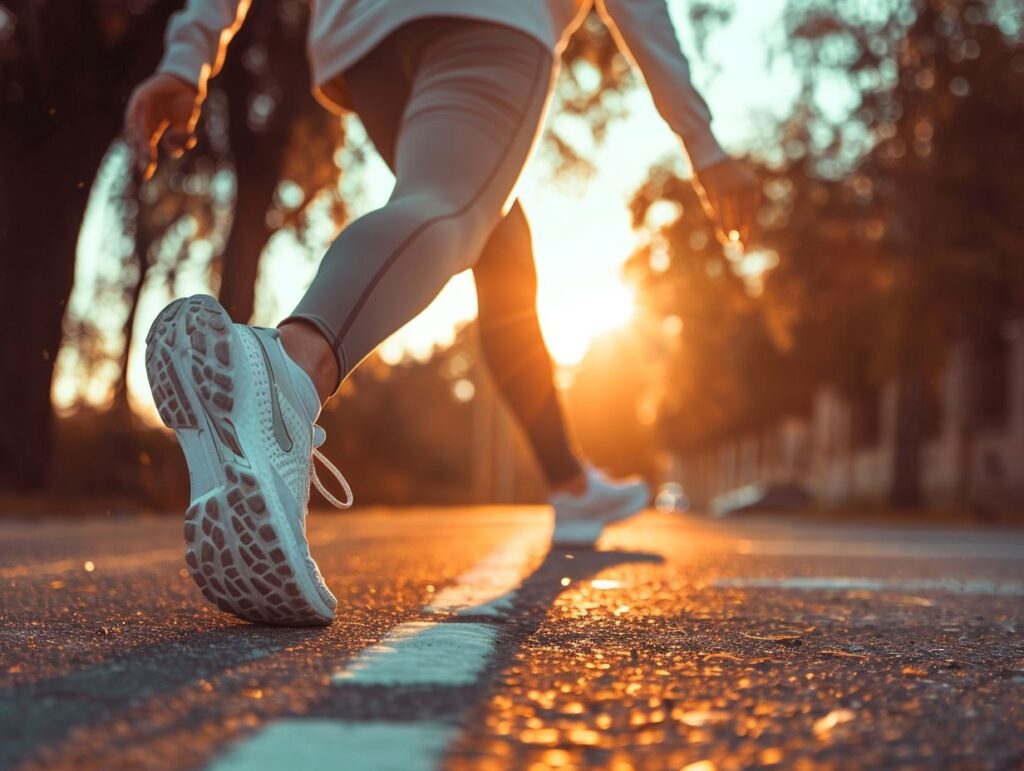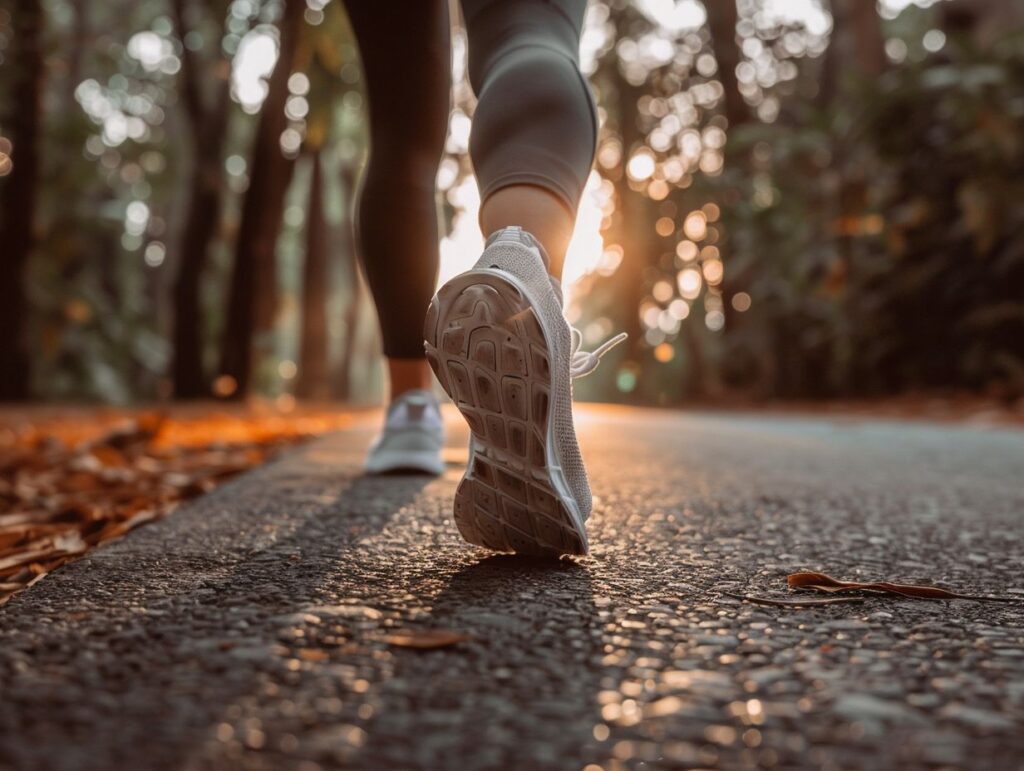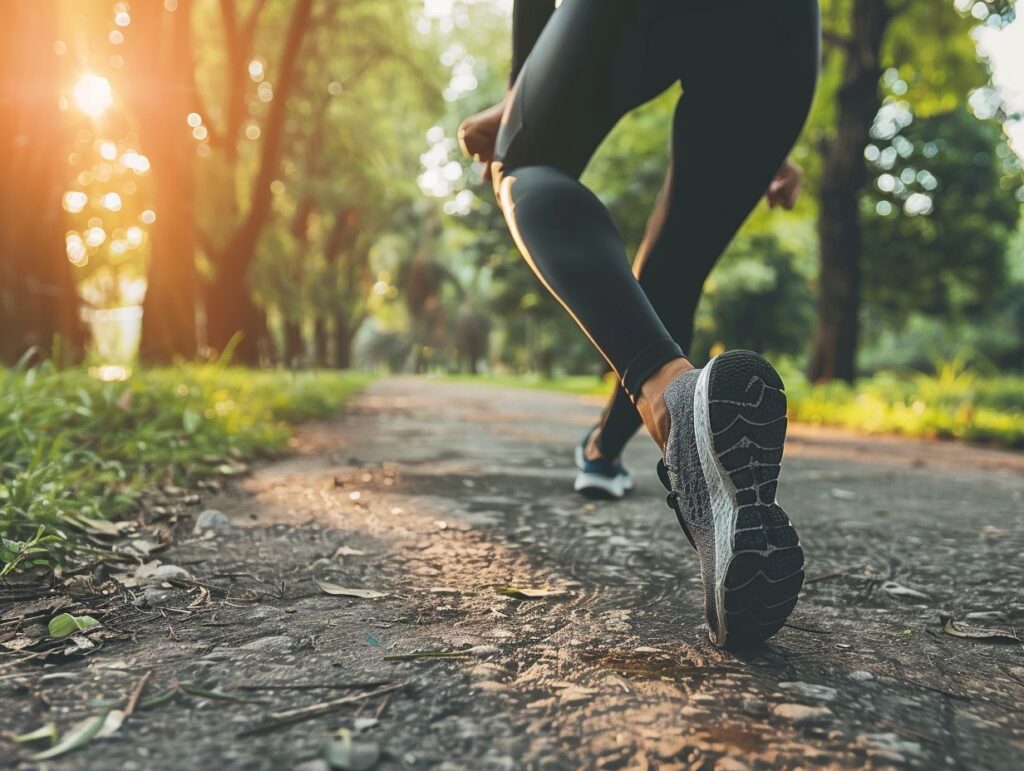Are you a runner looking to stay injury-free and keep logging those miles?
This article discusses the importance of injury prevention for runners and explores the most common running injuries you should be aware of.
We also provide practical tips on how to prevent these injuries, including specific exercises that can help strengthen your muscles and keep you running strong.
So lace up your shoes and let’s dive into the world of running injury prevention!
What Are Running Injuries?
Running injuries refer to the physical damage or harm that can occur to a runner’s body due to various factors such as overuse, improper techniques, or lack of proper equipment. These injuries can range from minor strains to more severe conditions that may require medical attention.
Common types of running injuries include shin splints, stress fractures, IT band syndrome, plantar fasciitis, and Achilles tendonitis.
- Shin splints typically result from overtraining or running on hard surfaces, causing pain along the shin bone.
- Stress fractures are small cracks in the bone that can occur due to repetitive impact.
- IT band syndrome involves inflammation of the iliotibial (IT) band, causing pain on the outer side of the knee.
- Plantar fasciitis is inflammation of the tissue connecting the heel bone to the toes, resulting in heel pain.
- Achilles tendonitis affects the Achilles tendon, causing pain and stiffness at the back of the heel.
Recognizing the symptoms of these injuries, such as persistent pain, swelling, or difficulty bearing weight, is crucial for early intervention. Neglecting running injuries can lead to chronic issues, affecting not only a runner’s performance but also their overall health.
Different muscle groups are susceptible to specific injuries; for example, calf strains are common in runners due to the high demand placed on these muscles during running. Hamstring injuries can occur from sudden accelerations or overstretching. Quadriceps strains may result from pushing off forcefully while running. Addressing running injuries promptly through rest, proper rehabilitation, and adjustments to training can prevent them from worsening and support a runner’s long-term health and performance.
Why Is Injury Prevention Important for Runners?
Injury prevention is crucial for runners to maintain their fitness, health, and training consistency. By incorporating proper techniques and strategies to prevent injuries, runners can improve their overall performance and longevity in the sport.
What Are the Common Running Injuries?
Common running injuries encompass a range of conditions that affect runners of all levels, from beginners to advanced athletes. Some prevalent injuries include shin splints, plantar fasciitis, IT band syndrome, and knee pain, which can significantly impact a runner’s performance and training regimen.
Shin Splints
Shin splints, known as medial tibial stress syndrome, are a common overuse injury that causes pain along the shin bone during or after running activities. Rest, proper rehabilitation, and gradual return to running are essential for recovering from shin splints.
Shin splints typically affect the muscles surrounding the tibia, such as the anterior tibialis and the soleus. Common symptoms include tenderness, soreness, and a dull ache along the inner part of the shin.
To prevent shin splints, runners should focus on warm-up routines like brisk walking or light jogging before intense running sessions. Incorporating dynamic stretches for the calf muscles and strengthening exercises like calf raises can also help build the necessary muscle support to reduce the risk of developing shin splints.
Runner’s Knee
Runner’s knee, medically known as patellofemoral pain syndrome, is a common running injury characterized by pain around or behind the kneecap. Strengthening exercises, rest, and proper form correction can help alleviate runner’s knee symptoms and prevent its recurrence.
Engaging in activities like running or frequent jumping can put continuous stress on the knees, leading to the development of runner’s knee. In addition to overuse, factors such as poor biomechanics, muscle imbalances, and inadequate warm-up routines can also contribute to the onset of this condition.
It is essential to address these underlying issues through a combination of strengthening exercises, rest, and targeted rehabilitation programs to effectively manage and prevent runner’s knee. Incorporating exercises that focus on improving quadriceps, hamstrings, and hip strength can help stabilize the knee and reduce the risk of injury.
Plantar Fasciitis
Plantar fasciitis is a painful condition that affects the bottom of the foot and the heel. Stretching exercises, proper footwear, and physical therapy are key components of plantar fasciitis treatment and prevention for runners.
When experiencing plantar fasciitis, individuals may notice sharp pain in the heel, especially with the first steps in the morning or after prolonged periods of sitting. This condition can also cause stiffness and tenderness in the foot, making walking and running uncomfortable. Common causes include overuse from activities like running or standing for long periods, improper footwear that lacks arch support, and tight calf muscles that place excess strain on the plantar fascia. Risk factors such as obesity, high arches, or flat feet can also contribute to the development of plantar fasciitis.
Achilles Tendinitis

Achilles tendinitis is the inflammation of the Achilles tendon, causing pain and stiffness in the calf area. Maintaining flexibility, proper recovery techniques, and gradual return to running are essential for managing and preventing Achilles tendinitis in runners.
It is crucial for individuals experiencing Achilles tendinitis to prioritize flexibility training to improve the range of motion in their calf muscles, helping to alleviate stress on the Achilles tendon.
Implementing recovery strategies such as rest, ice, compression, and elevation (RICE protocol) can aid in reducing inflammation and promoting healing.
Wearing appropriate footwear that provides proper arch support and cushioning, along with practicing correct running techniques, can significantly decrease the risk of developing Achilles tendinitis and other related injuries.
IT Band Syndrome
IT band syndrome is a common running injury that causes pain on the outer side of the knee or hip. Foam rolling, strength training, and targeted exercises can help alleviate IT band syndrome symptoms and improve hip stability in runners.
Foam rolling is an effective technique to release tightness in the IT band and surrounding muscles, reducing inflammation and promoting recovery. Incorporating exercises like clamshells, side leg lifts, and hip bridges can strengthen the hip abductors and glutes, which play a crucial role in stabilizing the IT band.
It’s important to maintain a balanced fitness routine that includes both strength training and flexibility exercises to prevent overuse injuries. Consistency is key when it comes to managing IT band syndrome, so integrating these strategies into your regular workout regimen can greatly benefit your overall hip health.
How Can You Prevent Running Injuries?
Preventing running injuries involves adopting a holistic approach that includes warm-up and cool-down routines, strength training, flexibility exercises, and balance drills. By incorporating these injury prevention strategies, runners can minimize the risk of common injuries and enhance their overall performance.
Warm Up and Cool Down Properly
Properly warming up before a run and cooling down afterward are essential components of injury prevention for runners. Incorporating dynamic stretching, proper technique, and allowing for adequate rest and recovery can help reduce the likelihood of sustaining running-related injuries.
- Dynamic stretching involves moving parts of your body and gradually increasing reach and speed to prepare your muscles and joints for the activity ahead. It’s recommended to perform dynamic stretches for at least 5-10 minutes before a run, focusing on areas such as your hamstrings, quads, and calves.
- During the cool-down phase, focus on gentle movements and stretches to help your heart rate gradually return to normal and prevent muscle stiffness. Proper body mechanics, such as maintaining good posture and using efficient running form, are also crucial in injury prevention.
Strengthen Your Muscles
Muscle strengthening exercises play a vital role in injury prevention for runners by enhancing muscle endurance, strength, and core stability. Targeting key muscle groups through specific exercises can help improve running performance and reduce the risk of overuse injuries.
- Incorporating exercises that focus on major muscle groups such as the core, glutes, and calves is particularly beneficial. Strengthening these muscles not only enhances running performance but also helps in maintaining proper body alignment and form while running.
- By engaging in a consistent strength training routine, runners can build the necessary strength and stability to withstand long distances and varying terrains. This, in turn, can lead to improved overall running efficiency and reduced likelihood of muscle imbalances or compensations that can lead to injuries.
Listen to Your Body
Listening to your body is a critical aspect of injury prevention for runners. Recognizing and responding to pain signals, avoiding overuse injuries, and prioritizing recovery are essential for maintaining long-term running health and performance.
It is crucial to tune in to the messages your body is sending during your runs, as these physical cues can be early indicators of potential issues. By being attuned to sensations like tightness, discomfort, or unusual fatigue, you can address any underlying problems before they escalate. Rest plays a key role in the healing process, allowing your body to recuperate and adapt to the stress of running. If persistent pain persists despite rest and self-care measures, seeking guidance from a healthcare professional or a sports medicine specialist is necessary to address the root cause of the problem.
Wear Proper Running Shoes

Wearing proper running shoes is essential for injury prevention and optimal performance for runners. Selecting footwear that suits your foot mechanics, running style, and terrain can significantly reduce the risk of foot, ankle, and lower limb injuries.
Considering factors such as cushioning, stability, and support in your shoe selection is crucial for maintaining comfort and decreasing strain on your muscles and joints. Cushioning helps absorb impact with each stride, while stability features can aid in controlling overpronation or supination. Supportive elements in the shoe design can promote proper alignment and reduce the likelihood of injuries associated with poor foot mechanics. It’s also vital to choose shoes appropriate for the surfaces you typically run on, such as road, trail, or track, to ensure optimal grip and traction.
Cross Train
Cross training is a valuable strategy for injury prevention among runners, as it introduces variety in workouts and engages different muscle groups. Incorporating activities like swimming, cycling, or yoga can help improve overall fitness and reduce the risk of overuse injuries.
Engaging in diverse cross-training exercises not only strengthens various muscle groups but also enhances cardiovascular fitness and prevents training plateaus.
For example, high-intensity interval training (HIIT) can boost endurance, while Pilates can improve core strength and stability.
Activities such as hiking or rock climbing can provide a change of scenery while incorporating uphill climbs to work on leg strength and endurance.
The key is to mix up activities to challenge the body in different ways and avoid repetitive stress on the same muscle groups.
What Are Some Specific Injury Prevention Exercises for Runners?
Specific injury prevention exercises target key muscle groups and functional movements to help runners strengthen their bodies and reduce the likelihood of common running injuries. Incorporating exercises like calf raises, glute bridges, deadlifts, planks, and leg raises can enhance running performance and resilience.
Calf Raises
Calf raises are a valuable exercise for runners to strengthen the calf muscles, improve ankle stability, and prevent injuries such as Achilles tendinitis. Performing calf raises regularly can enhance lower leg strength and resilience during running activities.
To perform calf raises effectively, stand with your feet hip-width apart and slowly raise your heels off the ground by pushing through the balls of your feet. Hold the raised position for a moment before lowering your heels back down. Aim for controlled movements to fully engage the calf muscles. Variations of calf raises include doing them on a step or with weights for added resistance. Start with 3 sets of 15 repetitions and gradually increase both sets and repetitions as you progress. Progressions can involve single-leg calf raises or explosive calf jumps to further challenge your calf muscles and enhance ankle stability.
Glute Bridges
Glute bridges are effective for targeting the glute muscles, improving hip stability, and preventing common running injuries such as IT band syndrome. Incorporating glute bridges into a regular workout routine can enhance running performance and reduce the risk of hip-related issues.
By engaging in glute bridge exercises, individuals can experience improved athletic performance and reduce the likelihood of developing IT band syndrome, a common issue among runners. Proper form is essential when performing glute bridges; ensure that your feet are hip-width apart and press through your heels to lift your hips towards the ceiling. To maximize the benefits, consider adding variations such as single-leg glute bridges or weighted glute bridges. Progressing gradually by increasing repetitions or adding resistance can further challenge the glute muscles and promote strength gains.
Single Leg Deadlifts
Single leg deadlifts are a functional exercise that targets the hamstrings, improves balance, and enhances proprioception for runners. Including single leg deadlifts in a workout routine can help reduce the risk of muscle imbalances and support proper running mechanics.
This exercise not only strengthens the hamstrings but also engages the core muscles for stability. By challenging each leg independently, single leg deadlifts help in addressing any strength discrepancies between the two sides of the body.
Proper alignment and focus on form are crucial for reaping the maximum benefits. To perform a single leg deadlift correctly, stand tall with a slight bend in the standing knee, hinge at the hips while extending the non-standing leg behind, and lower the torso towards the ground while keeping the back straight.
For beginners, starting with bodyweight or using a light dumbbell can be a good progression before advancing to heavier weights for more resistance.
Planks

Planks are a fundamental core exercise that enhances abdominal strength, improves core stability, and reduces the risk of lower back injuries in runners. Incorporating planks into a workout regimen can support proper running posture and overall musculoskeletal health.
When done correctly, planks engage not only the abdominal muscles but also the lower back, hips, and shoulders, creating a solid foundation for improved running efficiency. To maximize the benefits of planks for runners, it is essential to explore variations such as side planks, forearm planks, and plank jacks.
By gradually increasing the duration of holds and incorporating dynamic movements, runners can progressively challenge their core muscles and boost endurance. This progressive approach not only strengthens the core but also enhances stability, reducing the risk of injuries during running activities.
Side Leg Raises
Side leg raises target the hip abductor muscles, improve hip stability, and enhance balance for runners. Including side leg raises in a workout routine can address muscle imbalances, reduce the risk of IT band syndrome, and support proper lower body alignment.
By engaging the hip abductors, side leg raises help in stabilizing the pelvis and improving overall core strength.
This exercise also activates the gluteus medius, which plays a crucial role in hip stability and injury prevention.
Incorporating variations such as resisted side leg raises with a resistance band or elevated side leg raises can further challenge the muscles and enhance strength development.
Progressions like adding ankle weights or performing side leg raises on an unstable surface can level up the difficulty, leading to greater gains in muscle endurance and stability.
Frequently Asked Questions
What are some common running injury prevention exercises?
Some common running injury prevention exercises include calf raises, glute bridges, clamshells, side leg lifts, and foam rolling.
How often should I perform running injury prevention exercises?
It is recommended to perform running injury prevention exercises at least 2-3 times per week, in addition to your regular running routine.
Can running injury prevention exercises help improve my running performance?
Yes, running injury prevention exercises can help improve your running performance by strengthening key muscles and improving flexibility.
Are there any specific exercises for preventing IT band injuries while running?
Yes, exercises such as lateral band walks, single leg squats, and hip hikes can help prevent IT band injuries while running.
Do I need any equipment to perform running injury prevention exercises?
No, many running injury prevention exercises can be done with just your body weight. However, using resistance bands or a foam roller can also be beneficial.
Should I continue doing running injury prevention exercises even if I am not currently experiencing any pain or injuries?
Yes, it is important to continue incorporating running injury prevention exercises into your routine to help prevent future injuries and maintain overall muscle strength and flexibility.

My passion for martial arts goes beyond practice; it is a philosophy that shapes my writing, bringing a distinctive edge to my narratives and advice. I hold black belts in two martial arts disciplines and have competed internationally, experiences that enrich my storytelling with authenticity and excitement.

